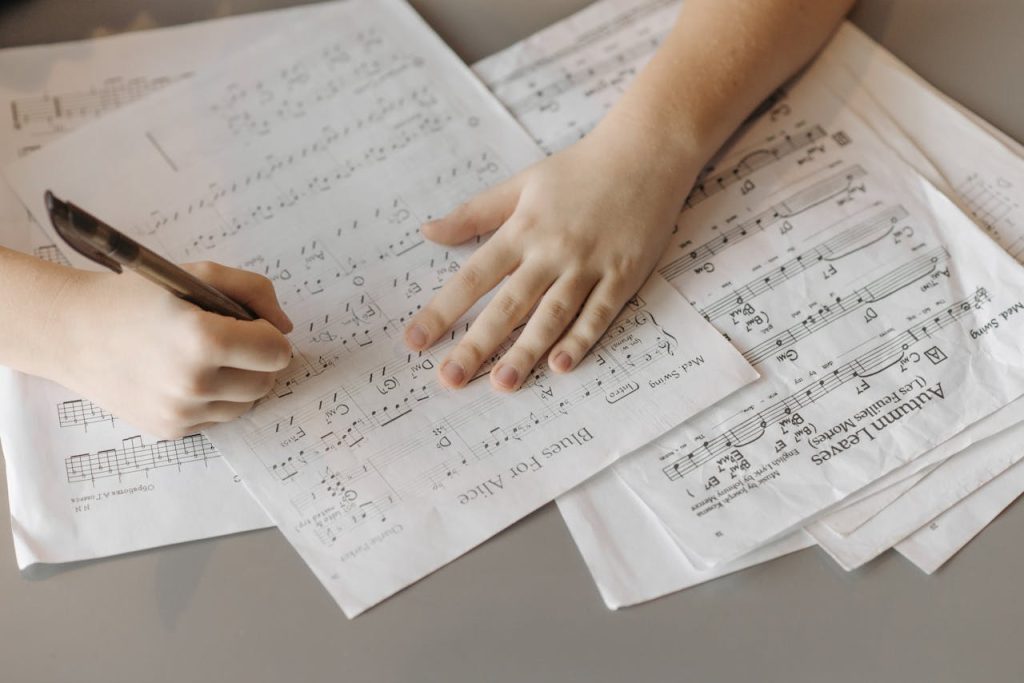(And Where Did They Even Come From?)
Have you ever looked at a piano and wondered why there are black keys? Or why some notes have sharps (♯) or flats (♭) in music notation? These symbols are more than just musical grammar — they’re a result of centuries of evolution in how humans organize sound.
Let’s take a closer look at how and why sharps and flats were born — and why music would be lost without them.
🎵 The Origins: Natural Scales and the Need for More Notes
Early Western music was built on simple scales known as modes (like Dorian, Phrygian, etc.), mostly using only the white keys on what would later become the piano. These modal scales were derived from singing traditions, like Gregorian chant, and focused heavily on whole steps and perfect intervals (like fourths and fifths).
But as music became more harmonically complex, something started to feel… missing.
➕ The Problem: The Limitations of the Natural Scale
- Let’s say you wanted to move from one mode to another mid-piece (a practice called modulation).
- Or you wanted to raise or lower a pitch just slightly to create tension, resolve dissonance, or match a new tonal center.
Without the ability to bend notes by half steps, musicians were stuck in a rigid structure.
This is where the concept of accidentals (sharps, flats, and later, naturals) began to appear — as a way to expand the palette of available notes.
⛪ Early Use: Church Modes and the Birth of “B Flat”
In medieval times, the note B natural caused a lot of tension when sung against certain harmonies. To soften this, singers began using a lower version — B♭. This was the first flat to be used in Western music history.
Eventually, the distinction between B and B♭ led to two types of notation systems:
- B durum (hard B) = B natural
- B molle (soft B) = B flat
This is also where we get the word “flat” (mol) and eventually the name of the key of F major, which uses B♭.
So in a way, flats were born out of the need to make harmony more pleasing and flexible.
🎹 The Development of the 12-Note System
As musical instruments like the lute, harpsichord, and early keyboard instruments developed, composers wanted to modulate to more keys and explore new harmonic territories.
The result was the gradual development of the 12-note chromatic scale, which includes:
- 7 “natural” notes (A–G)
- 5 “altered” notes (sharps/flats) that fill in the gaps
This system wasn’t random — it was based on acoustic science, including the harmonic series and the physics of vibrating strings and air columns.
Sharps and flats weren’t just invented for convenience — they were discovered as the natural solution to the musical problems composers faced.
🌀 Equal Temperament: Why C♯ and D♭ Sound the Same
In older tuning systems (like just intonation), a C♯ and a D♭ didn’t sound exactly the same. But this made it very difficult to switch between keys.
In the 17th–18th centuries, composers and instrument makers adopted a new system called equal temperament, where all 12 notes are spaced evenly. This meant:
- C♯ and D♭ sound the same (enharmonic equivalents)
- All keys are equally playable
- Sharps and flats became more standardized
Without this, the music of Bach, Beethoven, Chopin, and beyond would’ve been much more limited.
🎶 Sharps and Flats Today: A Language of Emotion
Today, sharps and flats allow us to:
- Play in all 12 keys
- Modulate smoothly between them
- Write richer harmonies and more expressive melodies
- Represent emotional colors — e.g., D♭ major often sounds warmer or dreamier than D major
Sharps can bring brightness, energy, or upward motion. Flats often feel softer, more nostalgic, or even darker — though this is also subjective.
🧠 Final Thoughts
Sharps and flats weren’t invented overnight. They evolved out of necessity, as musicians pushed the boundaries of harmony, tuning, and expression. They’re not random symbols — they’re the result of centuries of musical discovery.
So the next time you see a ♯ or ♭ in your sheet music, don’t be intimidated. Think of them as musical inventions that let us break free from limitation — and tell deeper, richer stories through sound.

